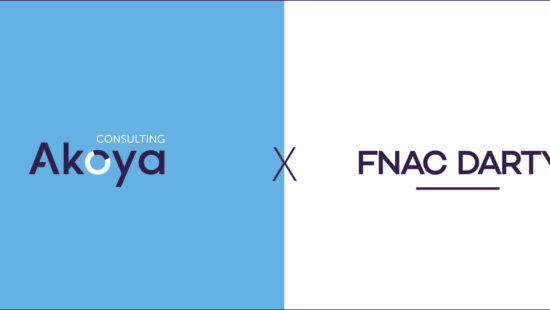5 good reasons to start Strategic Workforce Planning

For many, Strategic Workforce Planning (SWP) is no longer a new concept. At Akoya, we have been working with large companies for more than 10 years on this topic. And this, through all the variety of situations that the last decade has given us to see: a financial crisis, a pandemic, the growth of the economy, the decline of the economy, Brexit and other digital transformations.
We have thus seen many companies take action to better anticipate the changes in their workforce. To accompany them rather than to endure them. However, we see every day that many people are still discovering the subject. So whether you’re a SWP novice or you’re in a position to convince your internal contacts to take the plunge, we’ve come up with our top 5 reasons to embark on your first Strategic Workforce Planning exercise.
#1 Develop your teams, smoothly
Buying a new machine takes a click. Developing new skills takes time.
So, to enable Talent Acquisition, Talent Management or Learning & Development teams to know which skills to attract or develop and to what extent, it’s best to have an idea of what the company will need. Anticipating also allows for a smooth transition. A client recently told us: “I’ve been doing SWP for 8 years now. Well, we are the only BU that has not had a redundancy plan during this period”.
Because the SWP allows you to consider the leavings from your workforce, it will allow you to absorb the fluctuations imposed by the successive transformations of your activity. And when you know the costs of forced departures, you can only try to avoid them as much as possible.
#2 Don’t leave a strategic plan without a human component
To meet major challenges, planning is required.
It is no coincidence that an initiative like the Shift Project is calling for it to face the climate challenge. Similarly, to meet the major transformation challenges they face, and also because this tends to reassure their investors, many companies have recourse to a strategic plan. And thinking that a strategic plan can be successful without a human component is like thinking that you can make a business plan while ignoring 70% of the costs. It is therefore the responsibility of the people in charge of human issues: managers and HR, to develop a common language for Strategic Workforce Thinking, the conclusions of which will be carried by the SWP.
#3 Prepare for the unexpected
What about COVID, did you foresee it? And the war in Ukraine?
The answer is no. Do we give up studying because we don’t know what’s going to fall on the exam? Neither do we. On the other hand, we prepare ourselves for all eventualities by revising all the lessons. In Strategic Planning this is called Scenario Planning. Considering different strategic options and anticipating their implications to be better prepared for them. And this scenario planning is regularly updated, and new scenarios are tested.
Because it is from regular planning that agility will come. It is because we practice dealing with all types of situations that we are better able to react when unexpected events occur.
Akoya x Fnac Darty : panel discussion about SWP
Case study and tips: this summary of a panel discussion with Fnac Darty helps you to better understand the particularities of the Strategic Workforce Planning, which is never exactly the same but blends into a particular context, specific to each company.

#4 You’re never better served than by yourself
Not doing your own Strategic Workforce Planning is often leaving it to someone else to do for you.
It can be a Finance function that, due to a lack of time, will approach the subject through large theoretical hypotheses and other aggregates that cannot be used afterwards. You know the famous injunction to reduce a team of 10 people by 5%… But it can also be the upper echelon, the Comex, or even the Board, which will carry out their own analyses without having your intimate knowledge of the reality on the ground.
Or a Social Relations team that, due to a lack of strategic input, will spend a considerable amount of time producing a GPEC analysis that is disconnected from your operational reality. If you are in charge of piloting the workforce, it is because you are the one who is best able to think about the changes that you think are necessary or desirable for tomorrow.
#5 It’s never been easier to do SWP
The SWP requires collecting a lot of information, working on it collaboratively and consolidating it.
Much of this information is now available to your team. On the one hand, because you now have centralized HR systems that give you access to structured HR data. On the other hand, because you can rely on the internal expertise of those who see the evolution of the business on a daily basis. And finally, because with dedicated solutions like Albert, you can now focus on strategic thinking and let a system take care of consolidating information, doing effortless modeling and organizing insights in an actionable way.
In reality, there are many more than 5 good reasons to embark on a Strategic Workforce Planning exercise now. And perhaps the most important reason missing from the top 5 is that Strategic Workforce Planning is a gymnastic. And as for gymnastics, it is in the repetition that one improves. There’s no need to look for great precision or complexity from the start. Start simple. And you’ll see, once you’ve tried it, you’ll only want to improve and refine your analysis. And all this for a better consideration of the human being in the transformations.
So what are you waiting for?
Antoine Aubois
Co-Founder & Partner